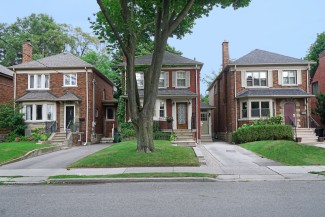Weatherization upgrades reduce utility bills and make homes safer and more comfortable. New research provides detail on how many low-income households cannot participate in weatherization programs because of needed home repairs, like fixing leaky roofs.
The federally funded Weatherization Assistance Program (WAP) helps income- eligible households reduce energy costs by improving the energy efficiency of their homes. Providing upgrades such as insulation and air sealing at no cost to eligible residents lowers utility bills—an average of $372 annually, according to previous research.
But a new ACEEE survey and analysis show that nearly one in Read the Reportfive homes audited for WAP is deferred because repairs are needed first. Of these, 40% go unaddressed and, thus, their residents continue to live in unhealthy homes with high energy bills. With additional weatherization-readiness funding, these homes could be repaired, leading to quality-of-life improvements, millions of dollars of financial savings, and major reductions in carbon emissions.
The problems: leaky roofs, other damage, and outdated electric service panels
We surveyed three state-level WAP managing agencies and 63 local WAP providers across the United States about weatherization deferrals. Respondents provided estimates of their deferral rates and the reasons for deferrals.
The most common issues in deferred homes were leaky roofs (in about 45% of deferred homes), floor or framing damage (roughly 23%), and unsafe, damaged, or outdated electrical service panels (around 23%). A large percentage of deferred homes were also estimated to be deferred for occupant-related reasons that could not be addressed with repairs, such as hoarding or actions that prevented WAP providers from working in the home (about 25%).[1]
Weatherization-readiness repairs unlock big savings
Weatherization-readiness repairs allow more homes to be serviced by WAP. Based on our estimated deferral rates and previous research on WAP-based energy and carbon savings, we estimate that, across the United States, weatherization readiness repairs could unlock the equivalent of 49,200 megawatt-hours (or 168,000 million British thermal units) of annual electricity savings as well as 153,000 metric tons of carbon emissions reductions (MTCO2e) over the lifetime of the measures.
For the report, energy modeling consultant PSD conducted a first-of-its-kind estimate of potential energy savings from weatherization-readiness repairs themselves, and we found that these could contribute additional savings. Savings from these repairs are especially high when they include heating system upgrades for older homes in colder climate zones, or cooling system upgrades in warmer climates.
Weatherization readiness needs more funding
Based on deferral rates and average deferral repair costs found in ACEEE’s survey, increased funding of $94 million per year could fund nearly all the weatherization-readiness work needed among the 7,000 homes WAP defers annually.[2] The needed funding could come from utilities, state and local governments, nonprofit organizations, or corporate investment to improve low-income communities. Leveraging diverse funding sources—particularly from utilities that already serve and can easily identify eligible customers—is vital to expanding coverage of weatherization readiness and reaching previously inaccessible homes.
To unlock the full potential of weatherization, state WAP management agencies and local WAP providers should collaborate with utilities, governments, nonprofits, and private partners to fund and deliver needed home repairs. Working together, they can drive the lasting benefits of lower costs in safe and comfortable homes.
[1] These homes could not be made weatherization-ready through repairs, so they were excluded from our analyses of “repairable deferrals.”
[2] Based on data from 2023.

